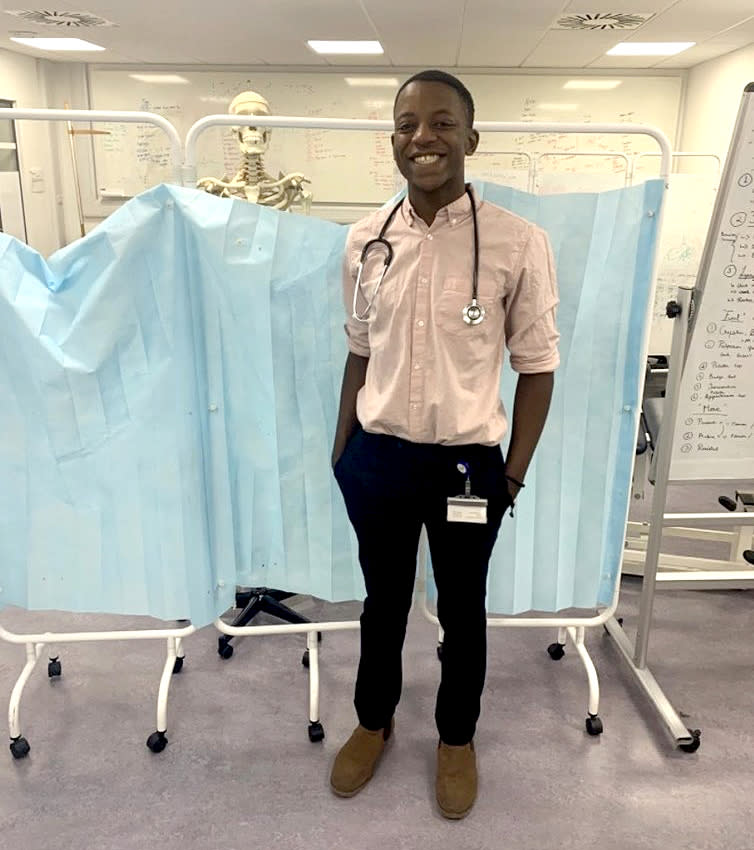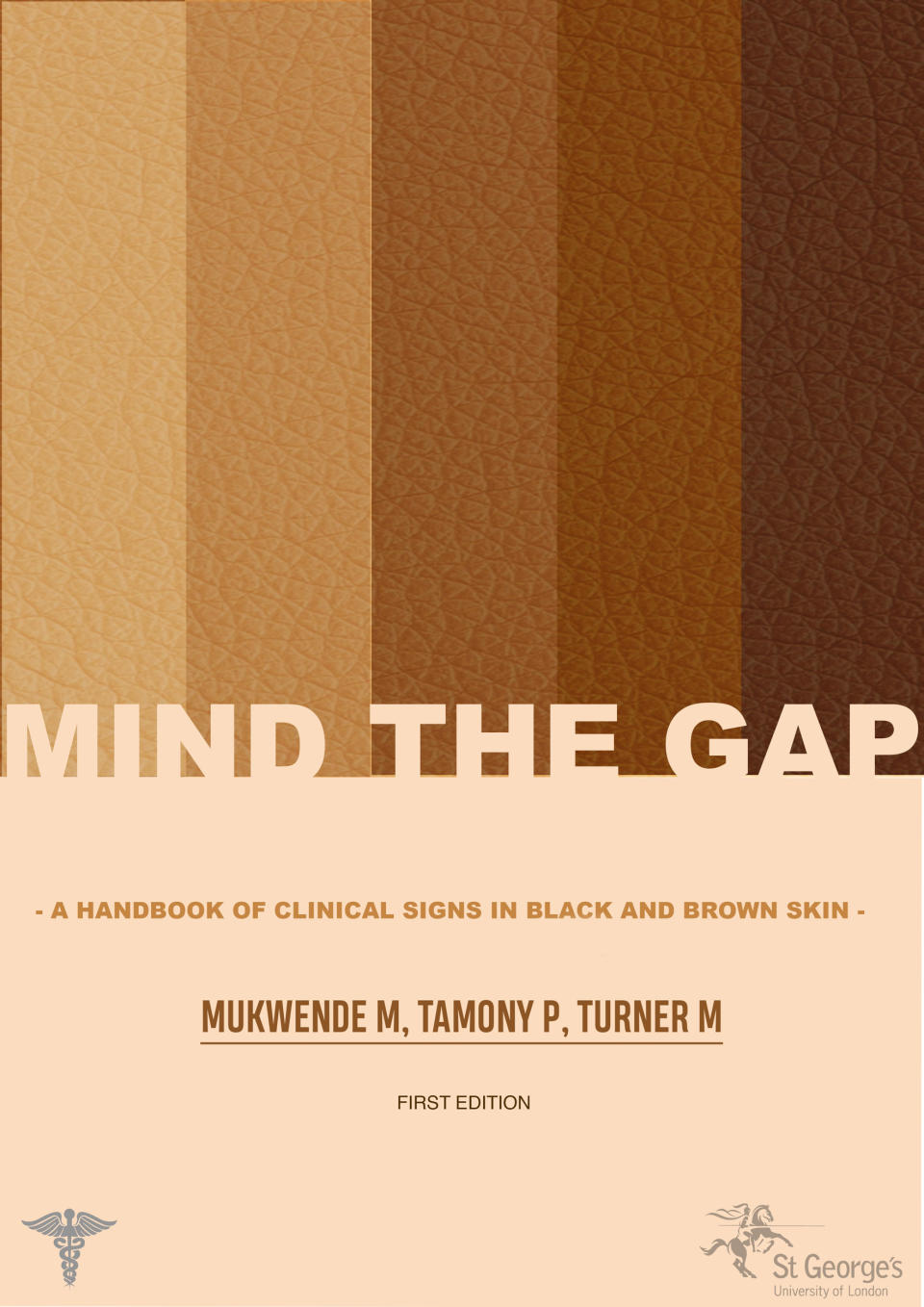U.K. med student writes guide to Black skin ailments
In his first year of medical school, Malone Mukwende noticed that there were no depictions of dark skin in his textbooks and lessons.
So last November, he joined forces with two staff members at the school, St. George’s, University of London, to create a guide, "Mind the Gap," showing how clinical conditions appear on dark skin.
“My motivations to create the book came from lived experiences like having people within my own community almost having a distrust for health care professionals because they have heard stories of misdiagnosis or had been misdiagnosed,” Mukwende, 20, told NBC News.
“There's certain points where I knew for certain that in darker skin or skin, like my own,” the diagnosis “would not be the same,” he said. At times, he added, it made him feel alienated.
Now in his second year, Mukwende said in an interview with the British Medical Journal that he was inspired to create the guidebook as a way to help medical practitioners better understand and diagnose darker-skinned patients.

Mukwende said that as part of a staff-student partnership project with two medical school lecturers, Peter Tamony and Margot Turner, he finally felt he was in a position to make a change where he saw it was needed.
The guide compares images of different conditions on dark and light skin, and provides students and health care professionals with proper identification and descriptions of the skin’s reaction to multiple diseases.
St. George’s has been supportive of the work. Mukwende, Tamony and Turner ran a training session for medical tutors at the school this month, and the administration is also making plans to incorporate the guide into courses across the university.
But lack of instructional imagery showing darker skin tones is an issue that many health care professionals say stretches throughout the medical field and needs to be reformed before communities of color can be better served.
“In dermatology we spend a lot of time looking at photos,” says Dr. Jenna Lester, a dermatologist at University of California, San Francisco. “That’s one of the ways that we learn. To have someone tell you a description of how something looks in darker skin, but not show you a photo of it, is really not sufficient and it's not comparable to how we learn about rashes and people with lighter skin.”

At the end of May, she and other dermatologists from Howard and Stanford universities released a research letter in the British Journal of Dermatology pointing to the lack of images of dark skin in articles studying possible skin manifestations of COVID-19.
“This is a problem because skin disease often presents differently in skin of colour,” they wrote in the research letter. “This can lead to cognitive biases that can also impact differential diagnoses and physician-patient relationships.”
Lester said that understanding the difference between the way illness shows in various skin tones comes down to basic color theory.
“The same color surrounded by a different color will look different,” she says. “When color or light passes through other colors, it makes it hit your eye in a different way. So things that appear red or pink in light skin tend to appear purple to deep magenta in darker skin."
The importance of learning about these differences is what inspired over 190,000 people to sign a petition for U.K. medical schools to increase the number of faculty members of color in clinical teaching.
“I think the world has just woken up to a lot of the problems which currently exist. Now that we have woken up to these problems we need to be able to make the future better because we can't be aware of these problems and do nothing about it,” Mukwende said.
He and his co-authors are in the process of trying to implement the book in medical schools across the U.K., with aspirations to have it adapted worldwide.
“I hope it also allows people to realize that this has been an issue for many years,” he said, “and that the issue now needs to be addressed.”

